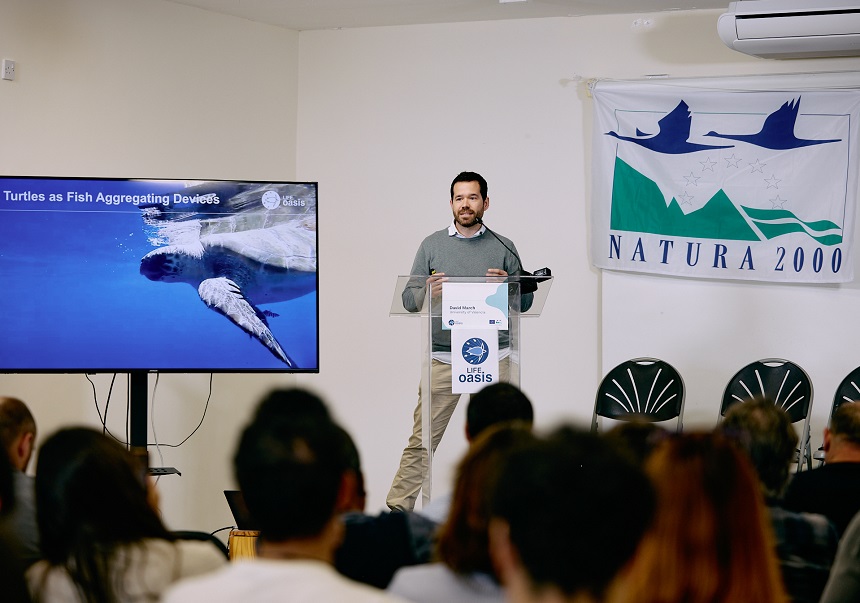“Dark diversity” reveals the hidden impact of human activities in nature at a global scale
- Science Park
- April 3rd, 2025

A study published in Nature utilizes potential, but absent, vegetable species in 119 regions all around the world, to determine in new ways the human impact on biodiversity. In regions heavily affected by human activities, ecosystems only contain one of every five potential species, according to the paper. The Desertification Research Centre (UV-CSIC-GVA) takes part in this international study providing data from Sierra de la Calderona Natural Park.
Identifying potential species that might live in a certain place but are absent. That is what is known as ‘dark diversity’, a new form of measuring the impact of human activity of which the most complex paper to date was published yesterday in Nature magazine. The study, where the Desertification Research Centre (CIDE), the mixed centre of the Universitat de València (UV), the Spanish National Research Council (CSIC) and the Valencian government (Generalitat Valenciana) take part in, analysed records of vegetation of 5,500 places in 119 regions all around the world, demonstrating the impact of human activities on natural vegetation that would not have been detected through traditional methods.
The results show that, in regions with low human impact, ecosystems contain more than a third of potentially suitable species, while other species remain absent for natural reasons, such as limited dispersal. Whereas, in regions heavily affected by human activities, ecosystems only contain one of every five potential species. Traditional measurements of biodiversity, such as the simple recounting of the number of recorded species, do not detect this impact because the natural variation of biodiversity among regions and ecosystems concealed the true effect of human impact, according to researchers.
The study was conducted thanks to the international collaboration DarkDivNet, which started in 2018 from one of Meelis Pärtel’s ideas, professor of Botany at the University of Tartu (Estonia) who coordinates the net and is the main author of the study Nature publishes. “We’d presented the theory of Dark Diversity and developed methods to study it, but to make global comparisons we needed consistent sampling in many regions. It seemed like an impossible mission, but many colleagues from different continents joined us,” Pärtel remembers.
Human Footprint Index
The level of human disturbance in each region was measured through the Human Footprint Index, which includes factors such as population density, changes in land use –such as urban development and agriculture– and infrastuctures –roads and railways–. The study discovered that the vegetable diversity of a place is negatively influenced by the level of Human Footprint Index and the majority of its components in a surrounding zone, even when they are hundreds of kilometres away.
“These results are alarming because they show that human disturbance has a much wider impact than previously thought. Pollution, felling, waste, trampling and man-made wildfires can exclude plants from their habitats and prevent their recolonisation,” Pärtel claims. “We also discovered the negative influence of human activity was less pronounced when at least a third of the surrounding region remained pristine, which supports the global goal of protecting 30% of the land,” he adds.
40 sampling points in the Valencian Community
In spite of the challenges posed by COVID-19 and the economic and political world crises, the data was compiled throughout the years thanks to DarkDivNet, through which the records of 5,500 places in 119 regions around the world were provided for their analysis at the University of Tartu. Here, data from several places in the Valencian Community also appear thanks to the contribution from the researcher at CSICFrancesco de Bello’s team, at CIDE.
“Our results, based on compiled samples in about 40 sampling points in the Valencian Community, exemplify the effects described in the article. It is about a region with a considerable Human Footprint, despite the sampling points being inside the Sierra de la Calderona Natural Park, between the provinces of Castellón and Valencia,” de Bello explains, collaborator of Meelis for more than a decade and also author of the paper.
Reference:
Pärtel, M., R. Tamme, C. P. Carmona, K. Riibak, M. Moora, J. A. Bennet, A. Chiarucci, M. Chytry, F. de Bello et al. (2025). Global impoverishment of natural vegetation revealed by dark diversity. Nature. DOI: 10.1038/s41586-025-08814-5
More information:
File in: Ciencias de la Vida , Ciencias Tecnológicas , Ciencias Agrarias
















